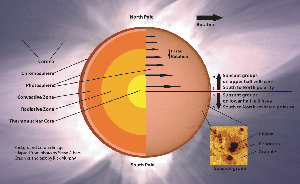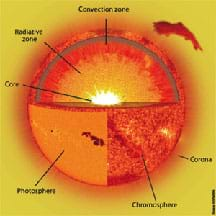
On April 28, the Parker Solar Probe successfully entered the corona of the Sun - an extreme environment that’s roughly 2 million degrees Fahrenheit. The geomagnetic field is expected to be at quiet levels on days one and two (31 Jul, 01 Aug) and quiet to unsettled levels on day three (02 Aug).Cambridge, MA - A spacecraft launched by NASA has done what was once thought impossible. I checked the forecast from the Space Weather Prediction Center from today (July 30), and nothing terribly dramatic appears to be in store, at least for the next few days: And sometimes that disruption can be pretty severe. But when solar material hits the field, it can jostle it in a way that causes disruption to satellites, power lines and industrial equipment. Earth is shielded from the material in the solar wind by it's magnetic field. "So this is an incredible chunk of the Sun that's flying out," he said. Measured from one side to the other, the hole is about 80 times as wide as the Earth.

But to be sure, this one is larger than most. Corey was quick to point out that formation of coronal holes isn't unusual. The region looks dark because there's simply less hot and bright solar material left behind. That's the stuff that's flying out into space. This allows more solar material to escape into space. In other words, it makes the solar wind even windier. Some explanation: The sun can develop a coronal hole when a portion of its magnetic field fails to loop back onto the surface, as it usually does. This part that's missing, the reason it's dark, is that whole chunk of the sun basically ripped off, blew out and is coming our way at about 2 million miles an hour. You'll notice that part of the sun is missing. Check out the interview in its entirety here. Corey Powell, who writes the awesome " Out There " blog here at Discover, was interviewed about the phenomenon today on the Fox News program America's Newsroom. Click here to see another animation, covering July 20-22. The large, roughly triangular dark area is the coronal hole. | The animation consists of images sent back to Earth by NASA's Solar & Heliospheric Observatory spacecraft, or SOHO. So I've changed the headline and the first paragraph to reflect this.

(See the explanation below.) But the word "chunk" implies that a really thick piece of the sun is gone. A huge portion of the sun's corona, or outer atmosphere, has indeed gone missing.
Parts of sun corona update#
| Update 7/31/13: After posting this piece, I had second thoughts about my use of the word "chunk" in the original headline (which read "Why is a Huge Chunk of the Sun Missing") and in the first paragraph. It'll take you to a new animation of the phenomenon posted to the web today by NASA. But even if you have heard about this so-called "coronal hole," click on the screenshot above.

(Source: NASA/SOHO) |See updates below | In case you haven't heard about it, a huge chunk portion of the sun's corona has indeed gone missing. Click on the image to watch the animation. It's the roughly triangular dark region in the image, which emphasizes light in the ultraviolet part of the electromagnetic spectrum. A hole in the sun's corona, or outer atmosphere, is visible in this screenshot from an animation of images from NASA's SOHO spacecraft.


 0 kommentar(er)
0 kommentar(er)
